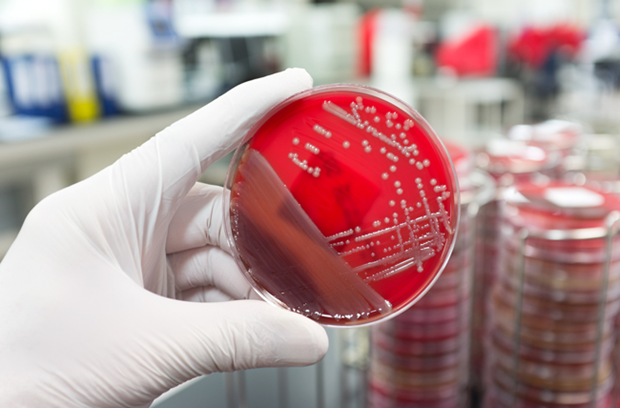Can You Get a Staph Infection From a Blood Draw

Chances are, you've heard of staph infections. Successfully treated with relative ease for decades, some strains of these bacterial infections have become superbugs in recent years, resisting antibiotics and making treatment difficult.
Some good news: outbreaks of MRSA (Methicillin-resistant Staphylococcus aureus), the most serious strain of highly contagious staph infections, are finally on the decline in the United States after two decades. Still, the dangers of staph infections have prompted hospitals – the most common outbreak sites - to take drastic steps to keep staph infections at bay. Healthy individuals need to be on the lookout, too. Knowing the signs and symptoms of staph infections is key to spotting one early and seeking treatment right away.
What's in a name?
Staph is short for staphylococcus bacteria, a type of germ that might actually be on your body right now. Jeff Millstein, MD, physician at Penn Internal Medicine Woodbury Heights, assures us not to worry though - "an estimated 25% of people have staphylococcus on their skin's surface at any given time, with no complications. It's when the bacteria make their way inside of the body that problems arise."
Pus-filled, red, and swollen skin blemishes are the most common types of staph infections in the skin, followed by impetigo, boils, and cellulitis – also skin-related, and also largely treatable with antibiotics.
Staph infections become more serious when they go deeper in the body, entering the bloodstream, joints, lungs, or heart. These are known as invasive staph infections.
How can I avoid staph infections?
A simple cut or abrasion is enough to let staphylococcus into your system, usually through skin-to-skin contact. Staphylococcus can also be ingested through contaminated food.
The most effective way to avoid staph infections is to step up hygiene and to avoid places where germs and bacteria are most abundant. In recent years those places have been, ironically enough, the very places we go to get better: hospitals.
"At hospitals, at home, and in everyday life, you can reduce your chances of a staph infection by washing your hands thoroughly with soap and water, keeping cuts and scrapes clean and covered, avoiding contact with others' wounds or bandages, and resisting the urge to share towels, razors, and cosmetics," advises Dr. Millstein. He continues, "if you're an athlete or if you exercise at a gym, shower immediately after workouts, practices, and games."
What to look for
Skin-based staph infections usually present as boils, red patches, blisters, and skin abscesses (which resemble boils, but are under the skin). It's not unusual for a fever to accompany skin-based staph infections.
A staph-infected wound is likely to be tender and swollen, with evidence of pus. Wrinkling or peeling skin that burns or blisters can be a sign of staphylococcal scaled skin syndrome (SSSS), another staph-related skin infection.
Invasive staph infections can be life threatening if not treated immediately. The tricky thing is, symptoms vary depending on where the bacteria takes hold. Some examples include:
- Septic arthritis, or a staph infection in joints, which is marked by redness, fever, and joint pain.
- Sepsis, which is an infection of the bloodstream, and one of the most dangerous forms of staph infection. Symptoms include rapid breathing, an elevated heart rate, fever, chills, and disorientation.
- Staph infections in bones which also cause fever and chills accompanied by pain in the infected area.
- Staph infections of the gastrointestinal tract, cause by ingestion of contaminated food, causes stomach cramps, diarrhea, and vomiting.
How are staph infections diagnosed?
A doctor who suspects a staph infection will test skin tissue or nasal secretions for signs of bacteria. Many doctors offer same-day results that allow treatment to begin as soon as possible.
What are my treatment options?
Treatment depends on the strain and its location in the body. "Once the bacteria type has been identified and it is determined if a resistant strain is present, a doctor will likely prescribe antibiotics," says Dr. Millstein. A number of antibiotics are available to treat staph infections, and your doctor will choose one that will work best based on your infection.
In some instances, drains help rid the body of pus and other buildup surrounding the infection. If an infection surrounds a medical device like a pacemaker or a joint replacement, the device should be removed immediately.
Should I be worried?
Staph infections are serious, but unless you spend time in a hospital or in-patient healthcare facility, your odds of contracting one are relatively low. Still, awareness never hurts. Know what to look for and don't wait to seek treatment from your primary care provider if there's a chance staphylococcus is in your system.
Looking for a primary care provider? Learn more about Penn Primary Care.
Can You Get a Staph Infection From a Blood Draw
Source: https://www.pennmedicine.org/updates/blogs/health-and-wellness/2018/may/staph-infections